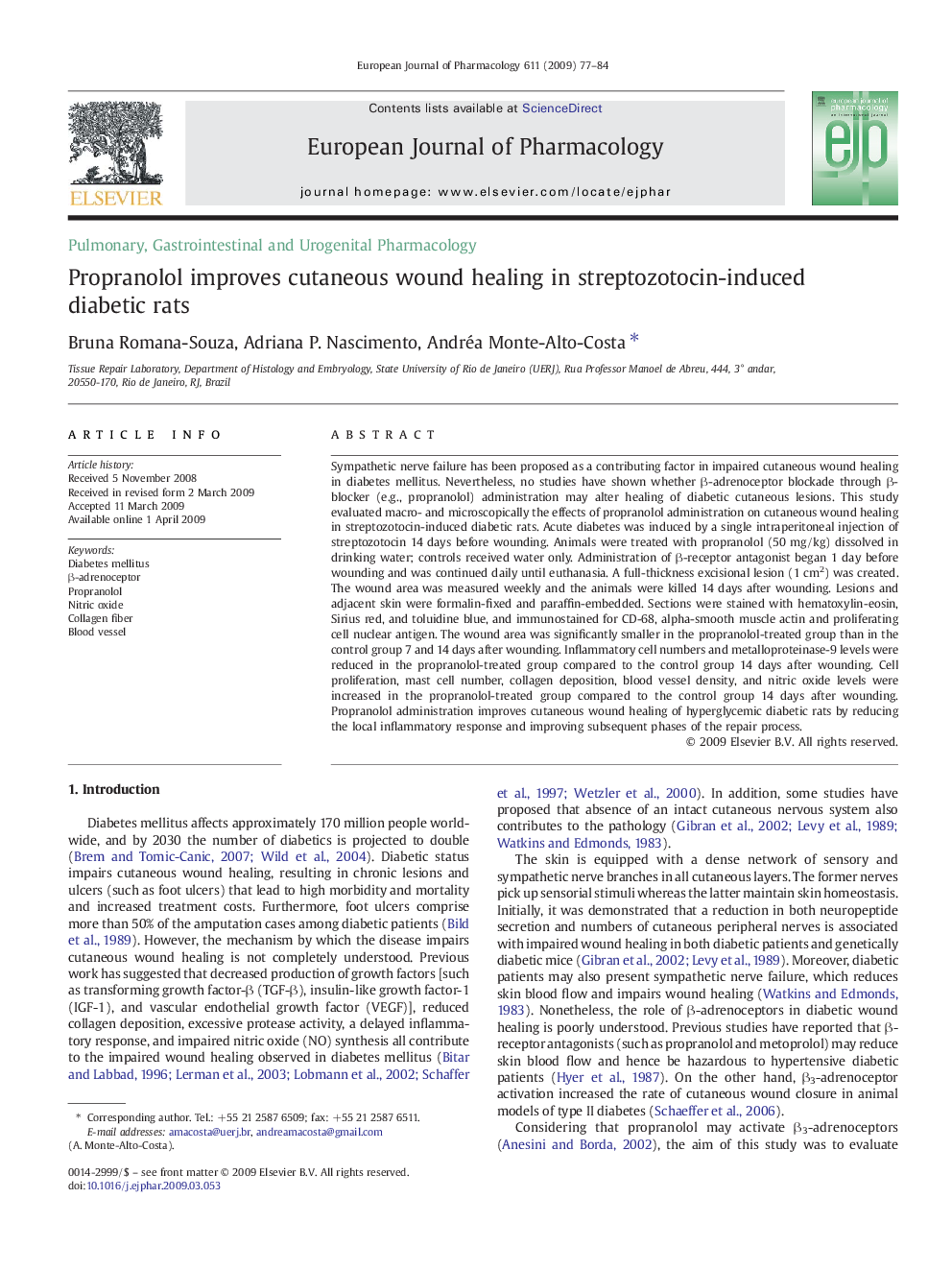| کد مقاله | کد نشریه | سال انتشار | مقاله انگلیسی | نسخه تمام متن |
|---|---|---|---|---|
| 2534315 | 1559084 | 2009 | 8 صفحه PDF | دانلود رایگان |

Sympathetic nerve failure has been proposed as a contributing factor in impaired cutaneous wound healing in diabetes mellitus. Nevertheless, no studies have shown whether β-adrenoceptor blockade through β-blocker (e.g., propranolol) administration may alter healing of diabetic cutaneous lesions. This study evaluated macro- and microscopically the effects of propranolol administration on cutaneous wound healing in streptozotocin-induced diabetic rats. Acute diabetes was induced by a single intraperitoneal injection of streptozotocin 14 days before wounding. Animals were treated with propranolol (50 mg/kg) dissolved in drinking water; controls received water only. Administration of β-receptor antagonist began 1 day before wounding and was continued daily until euthanasia. A full-thickness excisional lesion (1 cm2) was created. The wound area was measured weekly and the animals were killed 14 days after wounding. Lesions and adjacent skin were formalin-fixed and paraffin-embedded. Sections were stained with hematoxylin-eosin, Sirius red, and toluidine blue, and immunostained for CD-68, alpha-smooth muscle actin and proliferating cell nuclear antigen. The wound area was significantly smaller in the propranolol-treated group than in the control group 7 and 14 days after wounding. Inflammatory cell numbers and metalloproteinase-9 levels were reduced in the propranolol-treated group compared to the control group 14 days after wounding. Cell proliferation, mast cell number, collagen deposition, blood vessel density, and nitric oxide levels were increased in the propranolol-treated group compared to the control group 14 days after wounding. Propranolol administration improves cutaneous wound healing of hyperglycemic diabetic rats by reducing the local inflammatory response and improving subsequent phases of the repair process.
Journal: European Journal of Pharmacology - Volume 611, Issues 1–3, 2 June 2009, Pages 77–84